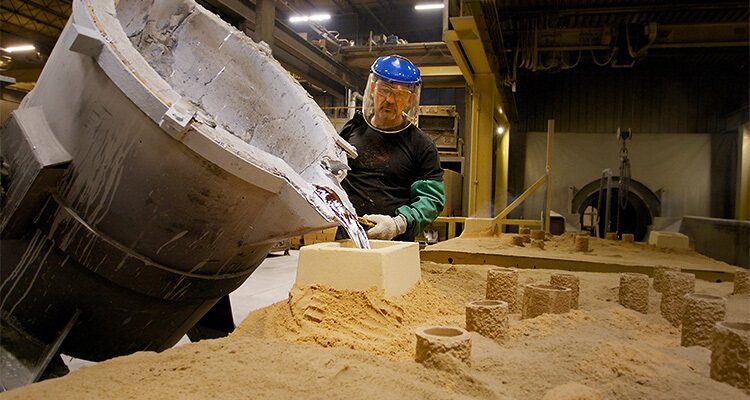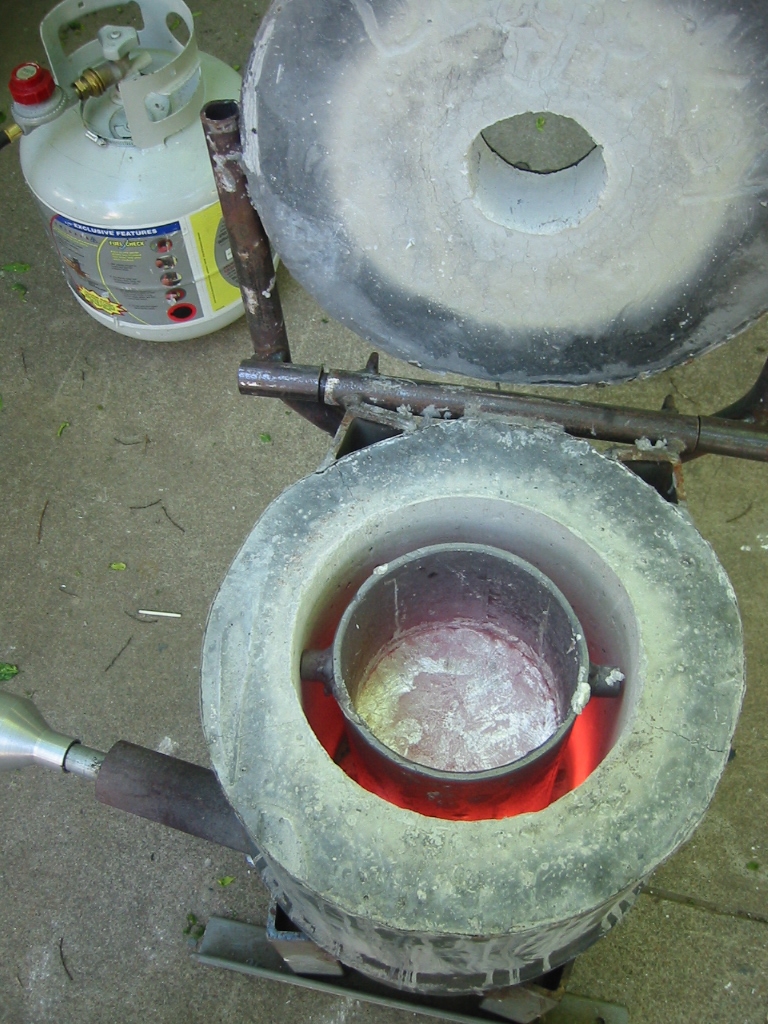Inside the Process of Aluminum Castings Production Explained
Wiki Article
Exploring the Cutting-edge Methods Made Use Of in Modern Aluminum Foundries
Modern aluminum foundries are undertaking a considerable improvement with the fostering of cutting-edge strategies. Advanced casting techniques, clever automation, and sustainable techniques are reshaping production processes. These improvements not just improve performance however additionally address environmental concerns. As the industry develops, the combination of electronic technologies plays a necessary duty. Understanding these adjustments is essential for grasping the future of aluminum production and its implications for global markets. What lies ahead in this dynamic market?Advanced Casting Techniques

In addition, improvements in thermal control and mold design have contributed to even more constant casting results. These innovations enable for better control of cooling rates, minimizing problems and boosting mechanical buildings. Because of this, manufacturers can produce lightweight yet long lasting parts, satisfying the increasing needs of various sectors, consisting of automobile and aerospace, for high-performance aluminum parts.
Smart Automation and Robotics
The integration of wise automation and robotics in aluminum foundries notes a considerable improvement in manufacturing performance. These innovations enable precision and consistency in manufacturing procedures, significantly lowering human error and enhancing safety and security. Automated robot systems manage repetitive tasks, such as molding, putting, and air conditioning, permitting human operators to focus on more complex obligations that need important reasoning and oversight.In addition, clever sensing units and AI-driven analytics offer real-time information monitoring, helping with predictive upkeep and minimizing downtime. This brings about enhanced source allowance and boosted power intake, adding to general sustainability in manufacturing.
In addition, the adaptability of robot systems permits quick modifications to transforming manufacturing demands, boosting adaptability in production. As foundries progressively adopt these advanced innovations, they not just enhance functional efficiency yet also position themselves as leaders in advancement within the steel casting sector.
Additive Manufacturing in Foundries
Transforming conventional manufacturing approaches, additive production is reinventing aluminum foundries by making it possible for the production of complex geometries that were formerly unattainable. This strategy allows for the layer-by-layer building and construction of parts, greatly minimizing material waste and reducing manufacturing times. Because of this, foundries can produce detailed styles that improve efficiency and functionality, accommodating the expanding demands of numerous industries.Additive production promotes rapid prototyping, permitting engineers to evaluate and repeat styles rapidly. This dexterity not only speeds up the development cycle but also assists in identifying possible issues prior to full-scale production begins. The assimilation of sophisticated materials and procedures in additive manufacturing additionally improves the mechanical buildings of aluminum parts, advertising innovation in product style. Subsequently, aluminum foundries that adopt these techniques place themselves at the center of industry innovations, making sure competitiveness in an ever-evolving market landscape.
Sustainable Practices and Recycling
Lasting techniques in aluminum foundries are progressively concentrated on enhancing reusing processes and embracing environment-friendly casting methods. These innovations aim to reduce waste and energy intake while optimizing making use of recycled products. As the sector advances, the integration of sustainability right into manufacturing methods ends up being vital for meeting environmental standards and customer demands.Recycling Process Improvements
As industries increasingly acknowledge the ecological impact of waste, aluminum foundries are embracing innovative recycling procedure improvements to enhance sustainability. These improvements concentrate on lowering power consumption and optimizing product healing. For instance, many foundries are carrying out closed-loop systems that reuse scrap aluminum generated throughout production, reducing waste and lowering the need for virgin materials. Advanced arranging innovations, such as automated optical sorting, improve the separation of various aluminum qualities, raising the efficiency of the recycling procedure. In addition, some foundries are utilizing hydrometallurgical techniques to recover aluminum from complex waste streams. By incorporating these renovations, aluminum foundries not just add to a circular economy but also lower their carbon impact, aligning with worldwide sustainability objectives.Eco-Friendly Casting Techniques
While standard casting techniques typically involve substantial energy intake and material waste, aluminum foundries are progressively embracing eco-friendly casting methods that prioritize sustainability. Techniques such as low-pressure die casting, which decreases air emissions, and using water-based mold launches add to reduced ecological influence. In addition, improvements in 3D printing modern technology enable the creation of intricate molds with less product waste. Several foundries are likewise implementing closed-loop systems that recycle water and aluminum scrap, more reducing resource consumption. By welcoming sustainable energy sources, such as solar and wind power, these facilities enhance their sustainability initiatives. Overall, the adoption of green techniques in aluminum casting not only benefits the atmosphere but additionally promotes financial effectiveness and advancement within the industry.Improved Quality Assurance Measures
Improved high quality control procedures in aluminum foundries are progressively reliant on sophisticated evaluation innovations and real-time tracking systems. These innovations make it possible for producers to identify defects early and ensure constant product high quality. By integrating these tools, foundries can substantially improve their operational effectiveness and lower waste.Advanced Examination Technologies
Advanced inspection technologies play an essential function in guaranteeing the high quality and integrity of aluminum spreadings. These innovative methods consist of non-destructive testing (NDT) methods such as ultrasonic testing, radiographic screening, and eddy current assessments. Each method permits thorough assessment of spreadings without jeopardizing their architectural integrity. Advanced imaging strategies, such as computed tomography, offer a substantial view of inner attributes, enabling the detection of defects like voids and inclusions. Additionally, automated optical assessment systems boost precision by using high-resolution cameras and artificial intelligence algorithms to evaluate surface area high quality. By carrying out these sophisticated examination technologies, aluminum foundries can efficiently decrease problems, guaranteeing that spreadings fulfill strict industry requirements and consumer needs.Real-Time Surveillance Systems
As manufacturers endeavor for quality in aluminum casting, real-time monitoring systems arise as a crucial enhancement in quality assurance steps. These systems use advanced sensors and information analytics to continuously track crucial parameters throughout the casting process, such as pressure, temperature, and alloy structure. By supplying immediate feedback, they enable operators to determine deviations from ideal conditions and make punctual changes. This positive method not just minimizes flaws yet likewise boosts general performance and reduces waste - Wisconsin Aluminum Foundry. In addition, integration of real-time data into production management systems assists in better decision-making and improves traceability. Real-time tracking systems play an important role in keeping high requirements of quality in modern aluminum foundries, guaranteeing that products fulfill rigorous industry requirements.Digital Double Innovation for Optimization

The combination of digital twin innovation permits foundries to examine different scenarios without disrupting real manufacturing. This capacity cultivates a positive technique to maintenance and resource management, inevitably reducing waste and decreasing functional expenses. Furthermore, the technology help in process optimization by enabling designers to imagine the effects of changes in real-time, ensuring greater high quality outcomes. Because of this, aluminum foundries embracing electronic twin innovation are positioned to accomplish greater performance and competitiveness in a progressively demanding market.

Sector 4.0 and IoT Assimilation
The fostering of electronic twin technology in aluminum foundries becomes part of a broader activity towards Market 4.0, identified by the assimilation of the Net of Things (IoT) right into manufacturing procedures. This combination makes it possible for real-time surveillance and information collection from different machinery and equipment, leading to improved operational performance. Sensors installed in devices collect vital information, which is examined to optimize manufacturing workflows and predict upkeep needs.In addition, IoT gadgets assist in communication in between different manufacturing stages, permitting for smooth sychronisation and lessening downtime. By leveraging cloud computer, foundries can keep and examine huge quantities of information, allowing even more informed decision-making. This innovation additionally sustains remote management, where operators can look after procedures from anywhere, improving responsiveness to manufacturing difficulties. In general, the combination of Market 4.0 and IoT within aluminum foundries is changing conventional techniques, making them much more dexterous and receptive to market demands.
Regularly Asked Questions
What Are the Main Advantages of Aluminum Over Other Metals?
Aluminum uses many benefits over other steels, including its light-weight nature, excellent deterioration resistance, high thermal and electric conductivity, pliability, and recyclability, making it a recommended choice for various applications across several sectors. - Wisconsin Aluminum FoundryHow Do Modern Foundries Deal With Hazardous Products?
Modern foundries take care of unsafe products with strict safety procedures, advanced purification systems, and recycling approaches. Normal training warranties employees understand best practices, while keeping an eye on systems detect and reduce prospective dangers to keep a secure functioning setting.What Is the Typical Lifespan of Aluminum Castings?
The typical lifespan of aluminum castings ranges from 20 to half a century, relying on factors such as environmental conditions, usage, and maintenance. Proper care can extend their sturdiness and performance substantially over time.Exist Any Kind Of Wellness Threats Connected With Aluminum Foundry Work?
Yes, aluminum foundry job postures wellness threats, consisting of respiratory system concerns from breathing in fumes and dirt, skin inflammation from contact with molten steel, and prospective exposure to harmful chemicals. Proper precaution are necessary to reduce these threats.Just How Do Factories Ensure Employee Security in High-Temperature Environments?
Foundries carry out rigorous security procedures, consisting of protective equipment, temperature level tracking systems, and normal training. These steps ensure that workers are geared up to handle high-temperature atmospheres, lessening threats and promoting a much safer office.
Numerous sophisticated casting strategies have actually arised in aluminum foundries, transforming conventional procedures. Sustainable methods in aluminum foundries are increasingly focused on enhancing reusing processes and taking on green casting methods. Numerous foundries are applying closed-loop systems that recycle scrap aluminum check here produced throughout manufacturing, decreasing waste and reducing the need for virgin materials. While traditional casting methods commonly entail substantial power intake and product waste, aluminum foundries are significantly taking on green casting strategies that focus on sustainability. While numerous markets are progressively adopting digital innovations, aluminum foundries are leveraging digital twin modern technology to enhance functional efficiency and enhance production processes.
Report this wiki page